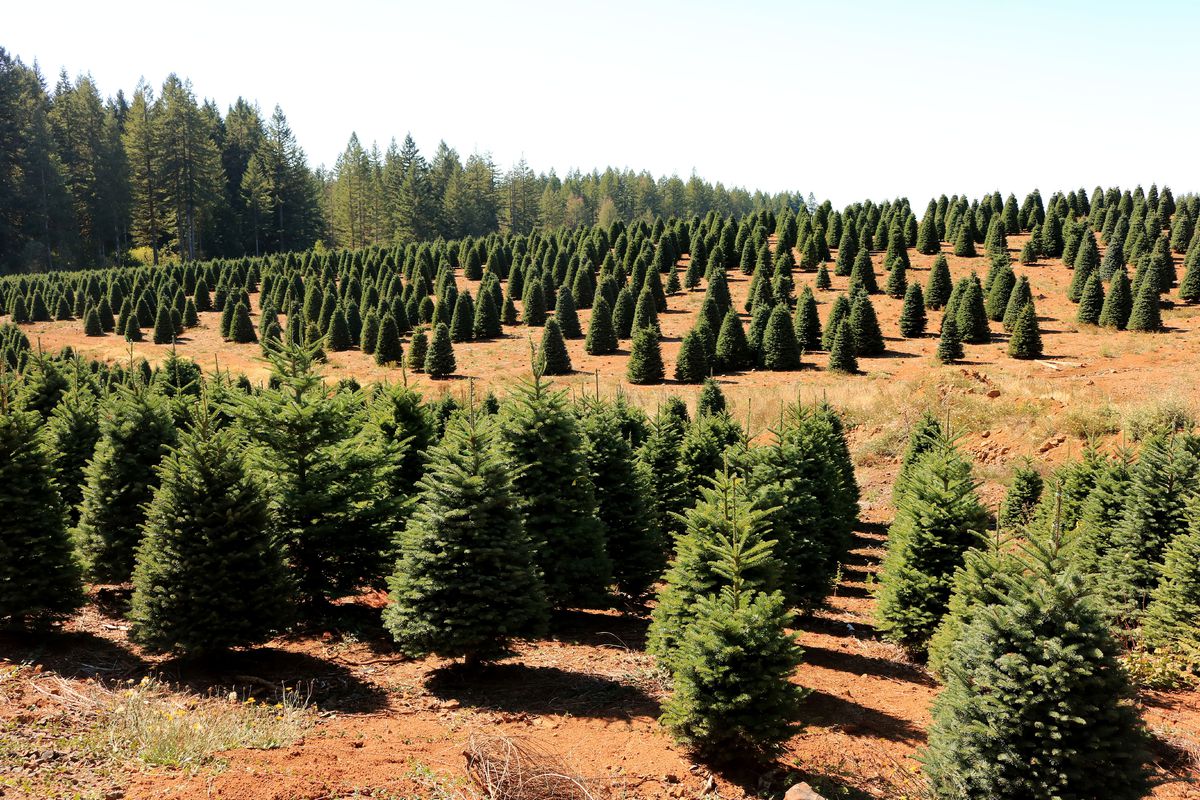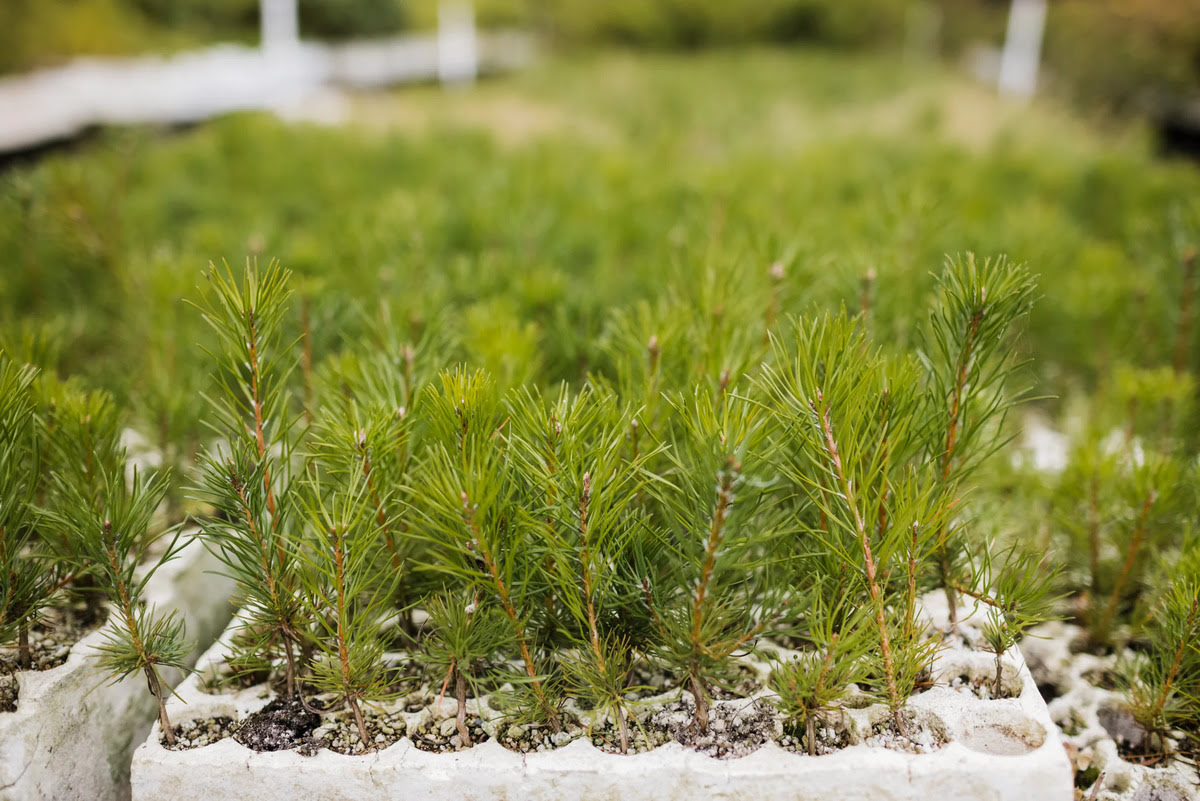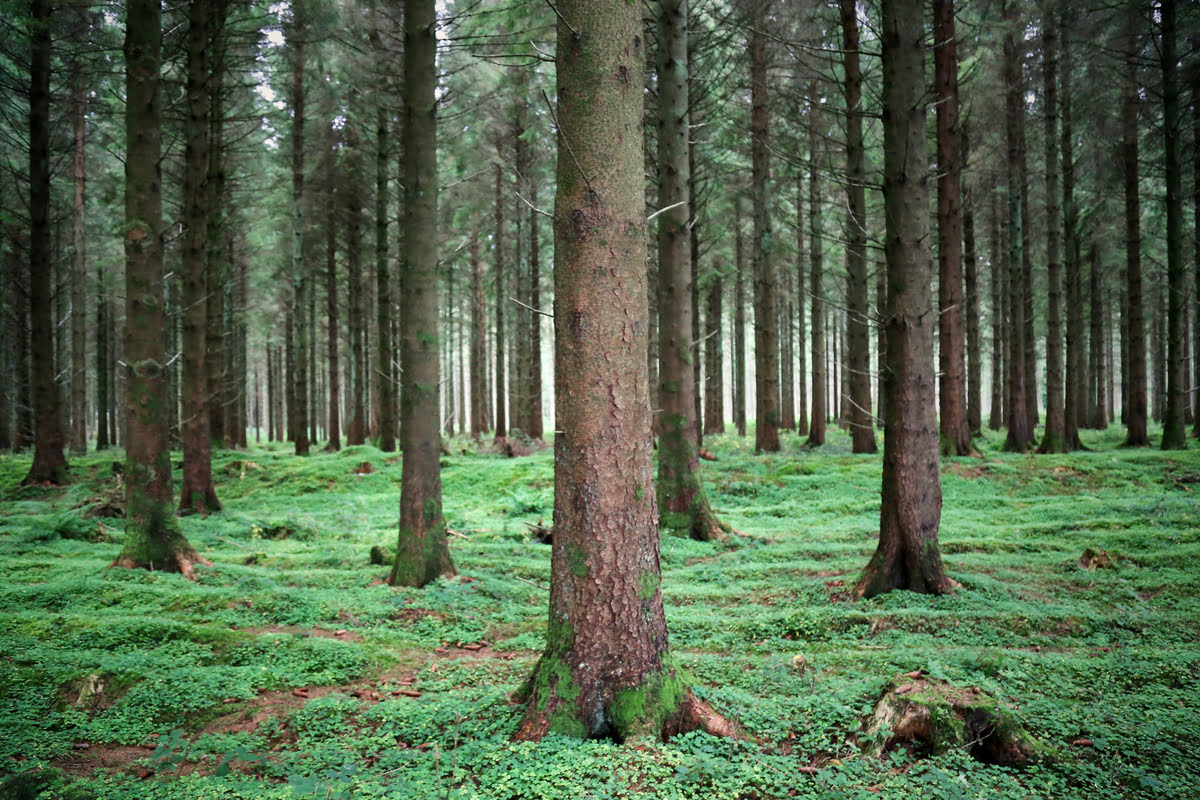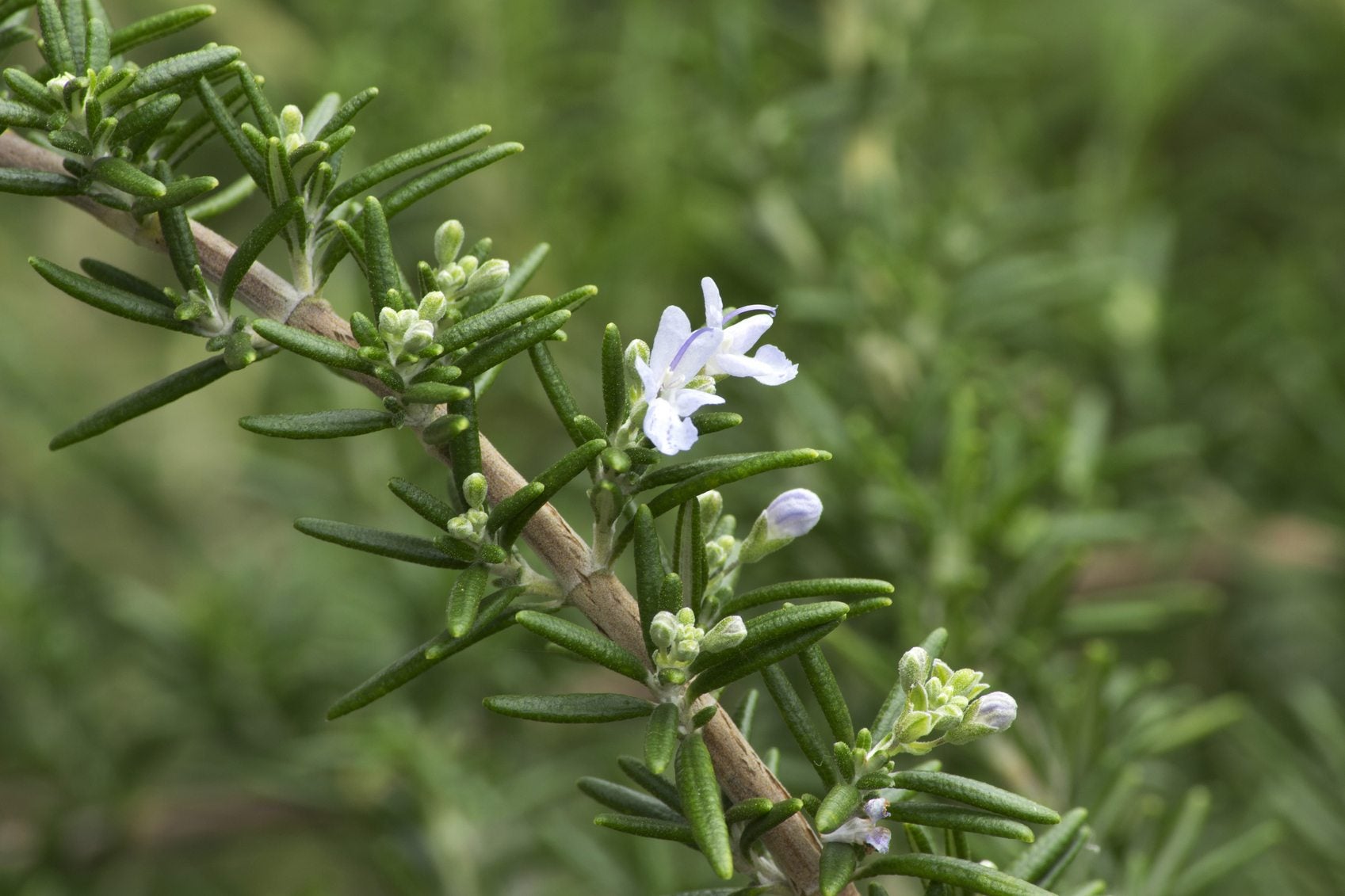Home>Gardening News and Trends>Latest News>How To Identify Different Pine Trees


Latest News
How To Identify Different Pine Trees
Published: October 31, 2023
Learn how to identify different pine trees with the latest news and expert tips.
(Many of the links in this article redirect to a specific reviewed product. Your purchase of these products through affiliate links helps to generate commission for Chicagolandgardening.com, at no extra cost. Learn more)
Table of Contents
Introduction
Welcome to the world of pine trees, where nature’s towering beauties adorn forests and landscapes across the globe. With their distinct features, pine trees have captivated humans for centuries. Whether you’re a nature enthusiast, a hiker, or simply have a curiosity about the natural world, learning to identify different pine tree species can be a rewarding and enriching experience.
Pine trees belong to the Pinaceae family, which includes over 100 species worldwide. These tall evergreen conifers are known for their long and slender needle-like leaves and distinctive cones. While pine trees share many commonalities, each species possesses unique characteristics that set them apart.
Being able to identify different pine trees is valuable for several reasons. It allows you to appreciate the diversity of these trees and understand their ecological importance. Identifying pine trees also comes in handy for outdoor enthusiasts, conservationists, and researchers, as it helps in studying and preserving these magnificent species. Whether you’re exploring a national park, studying forestry, or simply taking a leisurely walk, knowing how to identify different pine trees offers a deeper connection to the natural world.
In this article, we will delve into the various characteristics that can aid in identifying different pine tree species. We will discuss the physical features, cone and needle characteristics, bark traits, and geographic distributions. Additionally, we will highlight some of the most common pine tree species found around the world.
So, get ready to embark on a journey through the world of pine trees. With some knowledge and keen observation skills, you’ll soon be able to impress your friends and family by effortlessly identifying different pine tree species!
Understanding Pine Trees
Before we dive into the intricacies of identifying different pine tree species, let’s first develop a deeper understanding of these fascinating trees. Pine trees, scientifically known as Pinus, are conifers that belong to the Pinaceae family. They are characterized by their evergreen nature, meaning they retain their green foliage throughout the year. This adaptation allows them to thrive in a variety of environments, from cold and snowy regions to dry and arid climates.
Pine trees can vary in size, ranging from relatively short and shrub-like species to towering giants reaching heights of over 100 feet. Their branch structure is typically whorled, meaning the branches form distinct rings or tiers around the trunk. This unique growth pattern gives pine trees their iconic triangular or conical shape.
One of the key distinguishing features of pine trees is their long and needle-like leaves. Unlike broadleaf trees, which have flat and wide leaves, pine trees have adapted to conserve water by having needle-like leaves that minimize water loss through evaporation. The needles are typically arranged in bundles known as fascicles, with each bundle containing a specific number of needles depending on the species.
Another remarkable characteristic of pine trees is their cones. A cone is the reproductive structure of a pine tree, containing both male and female reproductive parts. The presence of cones on a tree can vary between species and can be an important factor in identifying different types of pine trees.
Understanding the life cycle of pine trees is also crucial in identifying them accurately. Pine trees are long-lived and have a complex reproductive cycle. They have separate male and female cones, with the male cones releasing pollen that is carried by the wind to the female cones. Once pollinated, the female cones develop seeds, which are then dispersed through various methods, such as wind or animal interactions.
By developing a solid foundation of knowledge about pine trees, including their growth patterns, leaf structures, and reproductive cycles, you’ll be better equipped to identify different pine tree species. So let’s explore the specific characteristics that can assist in distinguishing one pine tree from another.
Identifying Pine Trees
When it comes to identifying different pine tree species, several characteristics can help you differentiate one from another. By carefully observing the physical features, cone and needle characteristics, and bark traits, you can narrow down the possibilities and make an accurate identification.
Physical Characteristics
Physical characteristics play a significant role in identifying pine trees. Pay attention to the overall shape and size of the tree, as well as the arrangement and color of the branches. Some pine species have a more compact and symmetrical shape, while others may have irregular or sparse branching patterns. Additionally, take note of the height and width of the tree, as certain species have distinct growth habits.
Cone Characteristics
The cones of a pine tree can provide valuable clues for identification. Examine the size, shape, and color of the cones. Are they small and round or large and elongated? Are they hanging down or standing upright? Additionally, take note of the texture and presence of any unique markings or scales on the cone’s surface. These characteristics can vary between different pine tree species and help narrow down your identification.
Needle Characteristics
Another important feature to consider when identifying pine trees is the characteristics of their needles. Note the color, length, and texture of the needles. Are they dark green, light green, or blue-green? Are they short and stiff or long and flexible? Additionally, observe how the needles are arranged on the branches. Some pine species have needles grouped in bundles, while others have single needles attached directly to the branch.
Bark Characteristics
Examining the bark of a pine tree can also provide valuable information for identification. Different species have unique bark textures, colors, and patterns. Look for characteristics such as smooth or rough bark, presence of scales or furrows, and variations in color, ranging from reddish-brown to gray. These distinctive bark traits can help differentiate one pine tree species from another.
To accurately identify a pine tree, it’s important to consider a combination of these characteristics. Keep in mind that some features may vary depending on the age of the tree, environmental factors, and geographical location. Consulting field guides, botanical resources, or seeking guidance from experts can also aid in the identification process.
Now that we’ve explored the key characteristics for identifying pine trees, let’s delve into the specific physical, cone, needle, and bark traits of some common pine tree species around the world.
Physical Characteristics
When identifying pine trees, the physical characteristics of the tree itself can provide important clues. Paying attention to the overall shape, size, branching pattern, and color of the branches can help narrow down the possibilities and make a more accurate identification.
One key physical characteristic to consider is the shape of the tree. Some pine tree species have a more compact and symmetrical shape, while others may have a more irregular or open form. For example, the Eastern White Pine (Pinus strobus) has a tall and stately appearance, with a slender, pyramidal shape. In contrast, the Lodgepole Pine (Pinus contorta) has a more twisted and contorted growth habit, often leaning or crooked.
The size of the tree can also vary between different species. Some pine trees, like the Ponderosa Pine (Pinus ponderosa), can grow to be over 100 feet tall, while others, such as the Bristlecone Pine (Pinus longaeva), are much smaller and reach heights of only 20-40 feet. Pay attention to both the height and width of the tree to get a sense of its overall size and proportions.
In addition to shape and size, the arrangement and color of the branches can provide further clues. Some pine species, like the Scots Pine (Pinus sylvestris), have distinct tiers or rings of branches that wrap around the trunk. Others may have more irregular branching patterns. Take note of the color of the branches as well, as they can range from shades of brown to gray or even have a reddish hue, depending on the species.
Examining the foliage of a pine tree can also be helpful in identification. While all pine trees have needle-like leaves, the length and texture of these needles can vary. For example, the needles of the Shortleaf Pine (Pinus echinata) are relatively short, measuring around 2-4 inches in length, while the needles of the Bristlecone Pine can be as short as 0.5 inches. Additionally, some pine trees may have softer and more flexible needles, while others have stiff and sharp ones.
By taking note of these physical characteristics, including the shape, size, branching pattern, and color of the branches, as well as the length and texture of the needles, you can start to narrow down the possibilities when identifying different pine tree species.
Now, let’s move on to exploring the characteristics of pine tree cones, another important feature in the identification process.
Cone Characteristics
When it comes to identifying different pine tree species, paying attention to the characteristics of the cones can be incredibly helpful. Cones are the reproductive structures of pine trees and can vary in size, shape, and color, providing valuable clues for identification.
The first characteristic to consider is the size of the cones. Some pine species have cones that are relatively small, measuring only a few centimeters in length, while others have larger cones that can exceed 10 centimeters. For example, the cones of the Eastern White Pine (Pinus strobus) are typically large and slender, reaching lengths of 15-25 centimeters, while the cones of the Lodgepole Pine (Pinus contorta) are smaller and more cylindrical in shape, ranging from 3-7 centimeters in length.
Next, observe the shape of the cones. Pine tree cones can vary from elongated and cylindrical to round and compact. The shape can be influenced by factors such as species, age, and environmental conditions. For instance, the cones of the Ponderosa Pine (Pinus ponderosa) are oval-shaped and have a distinctive prickly texture due to their scales, while the cones of the Jack Pine (Pinus banksiana) are small, oval-shaped, and have a slightly curved appearance.
Consider the color of the cones as well. While most pine tree cones are brown or tan, some species have cones that exhibit unique color variations. For example, the cones of the Sugar Pine (Pinus lambertiana) can be light brown or even have a purplish hue, adding to their distinctive appearance.
Texture is another important cone characteristic to observe. The texture of the cone’s scales can differ between species, ranging from smooth and tightly closed to rough and open. For instance, the cones of the Red Pine (Pinus resinosa) have thick, reddish-brown scales that close tightly, while the cones of the Monterey Pine (Pinus radiata) have rougher scales that open slightly to release the seeds.
Lastly, take note of the location and arrangement of the cones on the tree. Some pine species have cones that cluster tightly near the top of the tree, while others have cones that are scattered throughout the branches. Additionally, certain species may have cones that persist on the tree for several years before falling off, while others shed their cones more frequently.
By observing these cone characteristics – size, shape, color, texture, and location – you can gather valuable information to aid in the identification of different pine tree species. Combined with other features like physical characteristics, needle types, and bark traits, cone characteristics can be a key factor in narrowing down the possibilities and making a more accurate identification.
Now, let’s move on to discussing another important feature – the characteristics of pine tree needles.
Needle Characteristics
Examining the needle characteristics of pine trees is essential for accurately identifying different species. Pine needles, also known as leaves, vary in length, color, texture, and arrangement, providing valuable clues in the identification process.
The first characteristic to consider is the length of the needles. Pine tree needles can range from short to long, with some species having needles as short as 1 inch and others as long as 18 inches. For example, the needles of the Shortleaf Pine (Pinus echinata) are relatively short, measuring around 3-5 inches in length, while the needles of the Sugar Pine (Pinus lambertiana) can reach impressive lengths of 10-18 inches.
Observe the color of the needles as well. While most pine tree needles are a shade of green, the specific hue can vary. Some species have needles that are dark green, while others have needles that are lighter and have a bluish or silverish tint. For instance, the needles of the Blue Spruce (Picea pungens) have a distinct bluish color, while the needles of the Loblolly Pine (Pinus taeda) are typically dark green. This color variation can be an important distinguishing feature.
The texture of the needles is another crucial characteristic to consider. Pine tree needles can range from soft and flexible to coarse and prickly. Running your fingertips along the needles can give you a sense of their texture. For example, the needles of the Eastern White Pine (Pinus strobus) are soft and pliable, while the needles of the Lodgepole Pine (Pinus contorta) are stiff and often prickly to the touch. Additionally, some pines may have resinous or sticky needles.
Take note of the arrangement of the needles on the branches. Some pine species have needles that cluster in bundles, while others have individual needles attached directly to the branches. The number of needles in a bundle can also vary between species. For example, the Red Pine (Pinus resinosa) typically has two needles per bundle, while the Pitch Pine (Pinus rigida) has three needles per bundle. Paying attention to the needle arrangement and bundle count can narrow down the possibilities when identifying pine trees.
It’s important to keep in mind that needle characteristics can vary within a species due to factors such as age, environmental conditions, and individual tree variations. It’s advisable to observe multiple needles from different areas of the tree to get a comprehensive understanding of their characteristics.
By carefully observing and considering the length, color, texture, and arrangement of the needles, you can gather valuable information to help identify different pine tree species. Let’s move on to exploring another important feature – the characteristics of the bark.
Bark Characteristics
Examining the bark of a pine tree can provide valuable insights when identifying different species. Bark characteristics, including texture, color, pattern, and thickness, can vary significantly between pine tree species.
One key characteristic to consider is the texture of the bark. Some pine species have smooth bark that is relatively soft to the touch, while others have rough or peeling bark that is more rough and textured. For example, the bark of the Paperbark Pine (Pinus bungeana) has a papery texture that peels away in thin, white strips, adding an interesting visual element to the tree. In contrast, the bark of the Pitch Pine (Pinus rigida) has a rough and scaly texture.
Take note of the color of the bark as well. Pine tree bark can range from light brown and gray to reddish-brown and even dark gray. Different species exhibit different colorations, which can be an important distinguishing feature. For instance, the bark of the Ponderosa Pine (Pinus ponderosa) is typically reddish-brown in color, while the bark of the Lodgepole Pine (Pinus contorta) is usually grayish-brown.
The pattern of the bark can also provide valuable clues for identification. Some pine species have bark that forms distinct patterns or features, such as shallow furrows, scales, or ridges. These patterns can vary in size and arrangement, and they can be an identifying characteristic for specific species. For example, the bark of the Jeffrey Pine (Pinus jeffreyi) often has deep, puzzle-like furrows, creating a unique and striking pattern on the trunk.
Bark thickness is another characteristic to consider when identifying pine trees. Some species have relatively thin bark, while others have thicker bark that provides more protection for the tree. The thickness of the bark can vary between the main trunk and the branches. For instance, the bark of the Bristlecone Pine (Pinus longaeva) is extremely thick, helping the tree withstand harsh environmental conditions such as freezing temperatures and strong winds.
It’s important to note that bark characteristics can change as the tree ages, with younger trees often having smoother and lighter-colored bark compared to older trees. Additionally, environmental factors and growing conditions can also influence the appearance of the bark.
By carefully observing and considering the texture, color, pattern, and thickness of the bark, you can gather valuable information to help identify different pine tree species. Now that we’ve explored the key characteristics of pine trees, let’s move on to discussing their geographic distribution.
Geographic Distribution
Pine trees are widely distributed across the globe, with different species adapted to thrive in various climates and regions. Understanding the geographic distribution of pine trees can be helpful when identifying different species and recognizing their natural habitats.
Pine trees are found on almost every continent, with the exception of Antarctica. They are particularly abundant in North America, Europe, Asia, and parts of Africa and South America. The specific species and their distribution patterns can vary within these regions.
In North America, for example, the Eastern White Pine (Pinus strobus) is predominantly found in the northeastern United States and parts of eastern Canada. The Ponderosa Pine (Pinus ponderosa) thrives in the western United States, spanning from California to parts of Canada. The Longleaf Pine (Pinus palustris) is primarily found in the southeastern United States, while the Lodgepole Pine (Pinus contorta) is commonly seen in western and northern regions.
Europe is home to several pine tree species as well. The Scots Pine (Pinus sylvestris) is widespread throughout Europe, from northern regions to the Mediterranean. The Mountain Pine (Pinus mugo) is predominantly found in mountainous areas, such as the Alps and the Pyrenees.
In Asia, there is a great diversity of pine tree species. The Korean Pine (Pinus koraiensis) is native to northeastern Asia, particularly China, Korea, and Russia. The Himalayan Pine (Pinus roxburghii) can be found in the Himalayan region, including India, Nepal, and Bhutan. The Japanese Black Pine (Pinus thunbergii) is endemic to Japan.
Various species of pine trees can also be found in different parts of Africa. The African Pine (Pinus patula) is native to several countries in southern and eastern Africa, including South Africa, Zambia, and Tanzania. The Aleppo Pine (Pinus halepensis) is commonly found in the Mediterranean region of Northern Africa, including countries like Morocco, Tunisia, and Algeria.
South America is home to diverse species of pine trees as well. The Paraná Pine (Araucaria angustifolia) is native to southern Brazil, while the Monkey Puzzle Tree (Araucaria araucana) is found in parts of Chile and Argentina.
It’s important to note that these are just a few examples of pine tree species and their geographic distributions. Pine trees can also be found in other regions and countries, adapting to a wide range of climates and altitudes.
Understanding the geographic distribution of pine trees can assist in narrowing down the possibilities when identifying different species. It can also provide insight into the natural habitats and environmental conditions these trees require for optimal growth.
Now that we have explored the geographic distribution of pine trees, let’s move on to discussing some of the most common pine tree species around the world.
Common Pine Tree Species
There are numerous pine tree species found around the world, each with its own unique characteristics and geographic distribution. While it’s impossible to cover all of them, let’s explore some of the most common pine tree species that are widely recognized and appreciated.
Eastern White Pine (Pinus strobus): This majestic pine species is native to eastern North America. It is known for its tall stature, reaching heights of up to 150 feet, and its slender, pyramidal shape. The Eastern White Pine has soft, bluish-green needles grouped in bundles of five and large, elongated cones.
Scots Pine (Pinus sylvestris): Native to Europe and parts of Asia, the Scots Pine is one of the most widespread pine tree species. It has an irregular shape, with reddish-brown bark and long, blue-green needles that are bundled in pairs. The cones of the Scots Pine are distinctive, featuring a conical shape with jagged scales.
Ponderosa Pine (Pinus ponderosa): Found in western North America, the Ponderosa Pine is a towering tree known for its straight trunk and thick, orange-brown bark with distinctive plates. Its long, yellow-green needles are grouped in bundles of three. This species is well-adapted to dry climates, with its thick bark providing protection against wildfires.
Loblolly Pine (Pinus taeda): Native to the southeastern United States, the Loblolly Pine is a fast-growing species that can reach heights of up to 100 feet. It has reddish-brown bark with deep furrows and long, slender needles bundled in groups of three. The Loblolly Pine produces large, woody cones that can remain on the tree for several years.
Japanese Black Pine (Pinus thunbergii): Endemic to Japan, the Japanese Black Pine is a popular ornamental tree known for its striking appearance. It has dense, dark green needles and rugged bark that develops interesting patterns with age. This species is often pruned and trained in bonsai cultivation.
Araucaria Trees (Genus Araucaria): The Araucaria genus comprises several notable species, including the Monkey Puzzle Tree (Araucaria araucana) from South America and the Norfolk Island Pine (Araucaria heterophylla) from the South Pacific. These trees have unique branch structures and distinctively arranged leaves. They are often cultivated as ornamentals in gardens and parks.
These are just a few examples of common pine tree species found around the world. Each species has its own unique characteristics, growth habits, and geographic distribution, adding to the beauty and diversity of pine tree forests worldwide.
Now that we have explored some common pine tree species, you are equipped with knowledge to appreciate and identify these magnificent trees in their natural habitats. Whether you’re exploring a forest, hiking through a national park, or simply taking a stroll in your neighborhood, keep an eye out for these spectacular pine tree species and deepen your connection with the wonders of nature.
Conclusion
Exploring the world of pine trees and learning to identify different species can be a fascinating and rewarding journey. By understanding the physical characteristics, cone and needle traits, bark features, and geographic distribution of pine trees, you can develop the skills to recognize and appreciate these magnificent trees.
Pine trees, with their evergreen foliage, unique cones, and needle-like leaves, are a symbol of resilience and adaptability. They can be found in diverse environments around the world, from the towering giants of North American forests to the ornamental Japanese Black Pines in gardens.
When identifying pine trees, paying attention to their physical characteristics such as shape, size, branching pattern, and color of the branches can help narrow down the possibilities. Examining cone characteristics, including size, shape, color, and texture, can provide further insights. Observing needle characteristics, such as length, color, texture, and arrangement, is another crucial aspect of identification. Additionally, considering the bark characteristics, including texture, color, pattern, and thickness, plays a vital role.
Understanding the geographic distribution of pine trees can also aid in identification, as different species have adapted to specific climates and regions. From the Eastern White Pine of North America to the Scots Pine of Europe, each species has its own ecological niche.
By acquiring knowledge about common pine tree species, such as the Eastern White Pine, Scots Pine, Ponderosa Pine, Loblolly Pine, Japanese Black Pine, and Araucaria trees, you can expand your understanding of the diversity within the world of pines.
So, the next time you find yourself amidst a forest or walking along a trail, take a moment to observe the pine trees around you. Appreciate their majestic beauty and intricacies. By identifying different pine tree species, you can deepen your connection with nature and enhance your understanding of the ecosystems they inhabit.
Remember, the journey of identifying pine trees is an ongoing process. Continuously expanding your knowledge and sharpening your observation skills will enable you to uncover more of the secrets hidden in the world of pine trees. Enjoy the exploration and discovery, and let the pine trees guide you deeper into the wonders of the natural world.










